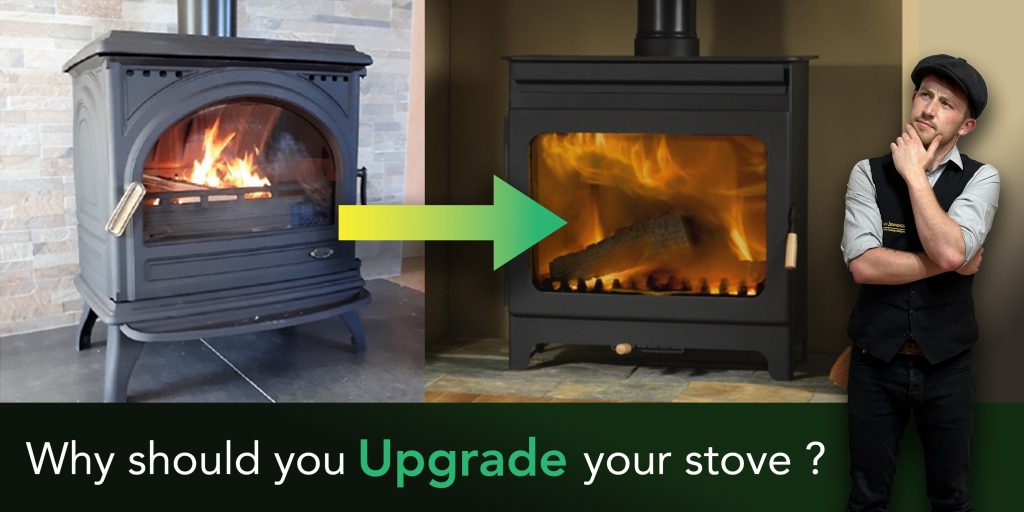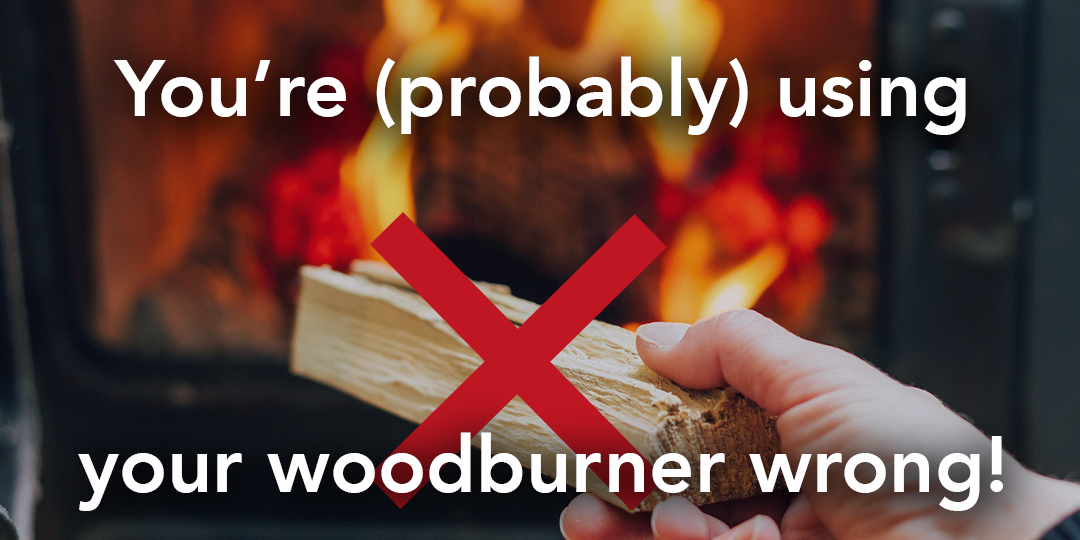There’s nothing quite like the warm glow and gentle crackle of a fireplace, with flames licking from earthy timbers and a soft glow filling the room. There’s a certain romance associated with old stone houses billowing smoke from the chimney. But what if I told you that every puff of smoke escaping from your chimney is not only wasting heat but also costing you money?
Smoke is simply unburnt fuel. When we burn wood, around 80% of the heat stored in the wood comes from the wood gases, smoke. To maximise efficiency, it is crucial to burn as much of this smoke as possible before it escapes up the chimney and is lost forever.
A look to the past
In the past, chimneys and smoke were inseparable due to the prevalence of large open fires used for cooking; the same fireplaces many of us, here in rural France, possess even today. Unfortunately, these open fires were highly inefficient, producing only 7-15% efficiency. The lack of a firebox to maintain high temperatures and facilitate the oxygen/smoke reaction resulted in most of the smoke escaping without combusting properly. As a result, chimneys were filled with smoke, which escaped out the top.
The invention of woodburners in the 16th century marked a significant improvement in fire efficiency, offering around 30% efficiency compared to open fires. Over the years, wood stoves were redesigned into more compact versions for cooking. However, it was not until the 1980s, after the energy crisis of the 1970s, that significant advancements were made. The surge in popularity of highly inefficient stoves during that time, combined with burning whatever was available to reduce costs, led to an increase in chimney fires and environmental concerns. This prompted the introduction of targets and legislations in the 1980s to increase stove efficiency and limit emissions.
Fast forward to modern-day
Today, the term “modern” encompasses most stoves installed, with an average efficiency of 75% or less. However, there are modern Eco-Design stoves that can achieve over 90% efficiency. How do they achieve such high efficiency?
The average modern stove has a cast iron combustion chamber (firebox) that absorbs heat from the fire, radiating some of it back into the firebox and distributing the rest to heat the room. It also features ventilation systems to supply oxygen for combustion and baffle plates to control the flow of wood gases. In contrast, an Eco-Design stove has a few key adaptations that significantly increase its heat output from the same amount of fuel.
Eco-Design stoves surround the firebox with vermiculite fire bricks, which have superior insulative properties compared to cast iron. This allows more heat to be retained in the firebox, resulting in more efficient combustion of compounds and more heat being transferred to the home. These stoves may also include secondary baffle plates or catalytic combustors to further enhance combustion before the gases escape up the chimney.
Why you should upgrade
So, why should you upgrade your stove? The answer is simple: it will save you money. If you currently have an open fire, upgrading to an Eco-Design stove can increase efficiency by up to 12 times. Even if you already have a modern stove, switching to an Eco-Design stove can still, in some cases, double your efficiency, leading to significant savings on wood consumption. Many of my own customers who have made the switch have reported using half the amount of wood compared to the previous year. In addition, maintenance costs are lower for Eco-Design stoves, as vermiculite fire bricks are more affordable to replace than cast iron plates.
There are of course some cases where upgrading may not be beneficial. If you are not a frequent stove user or do not plan to stay in your current home for an extended period, the financial benefits of upgrading may not outweigh the costs. It’s essential to consider how often you use your stove and how long you plan to stay in your home. If you use your stove every day during the winter months, or even as an auxiliary heater in the afternoons and evenings, upgrading to an Eco-Design stove is likely to save you money in the long run. However, if you don’t anticipate staying in your home for the next five-ten years or if you use your stove sporadically, such as in a holiday home, the financial benefits of upgrading may not be significant, and you may be better off sticking with your current stove.
It’s important to note that Eco-Design stoves, being at the forefront of woodburning technology, are not commonly found in general stores or DIY shops. To view or obtain one of these stoves, it is recommended to visit a specialist dealer. If you’re located in Vienne, France, please get in touch and I’d be happy to point you in the right direction to explore these high-end Eco-Design stoves.
Upgrading your stove not only brings financial benefits but also contributes to a more sustainable and environmentally friendly lifestyle. Eco-Design stoves, with their higher efficiency and lower emissions, help reduce the carbon footprint associated with woodburning. By burning wood more effectively, you can make the most of its heat potential while minimising waste and environmental impact.
In summary, upgrading your stove to an Eco-Design model offers numerous advantages. The increased efficiency can lead to substantial savings on wood consumption, resulting in lower heating costs. The advanced design and construction of Eco-Design stoves ensure better combustion, reduced emissions, and a more sustainable approach to woodburning. However, it’s important to consider your usage patterns and future plans before making the decision to upgrade. If you frequently use your stove and plan to stay in your home for an extended period, the financial benefits and environmental impact make upgrading a wise choice.





